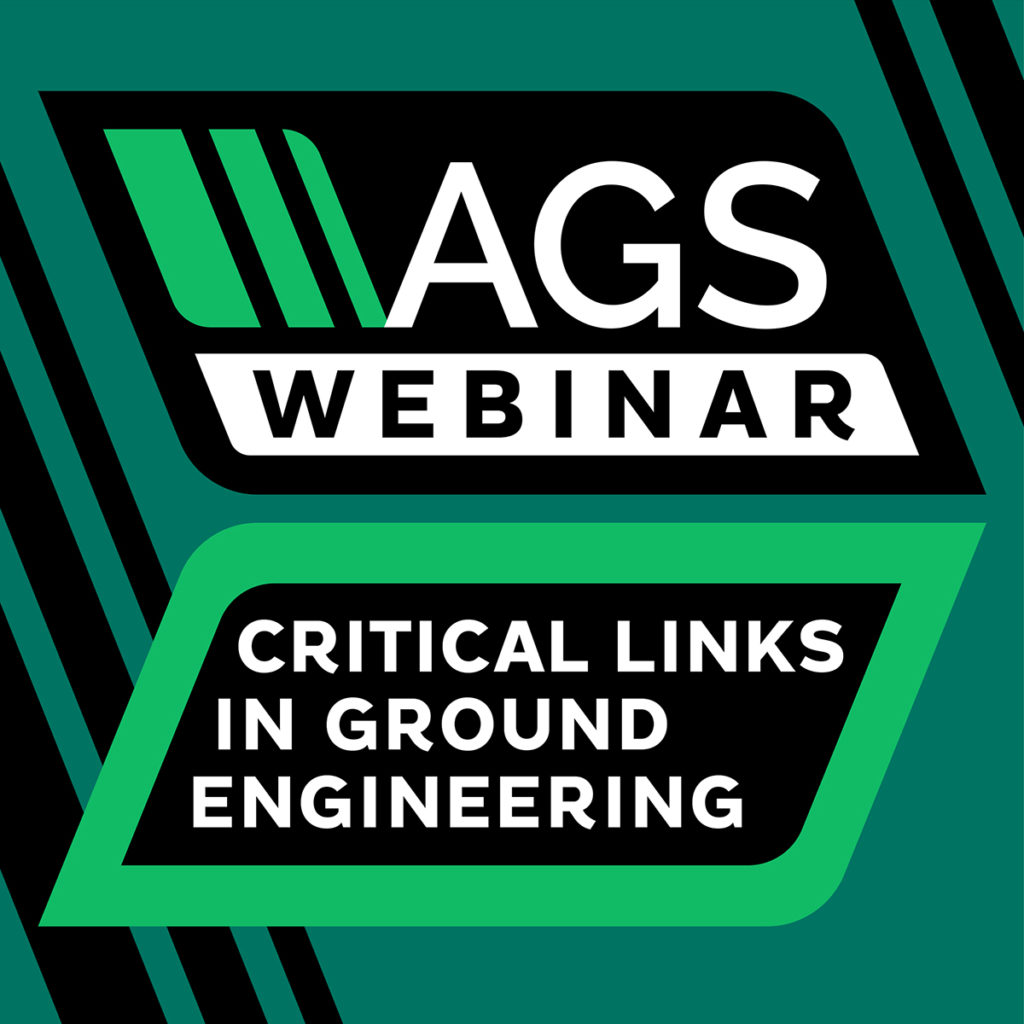
On 4 November 2020, AGS held the first of what is expected to be a series of Webinars and Seminars under the title “Critical Links in Ground Engineering”.
The subject of the November Webinar was Instrumentation and Monitoring (I&M), with a future Webinar expected to be about Laboratory Testing.
The Webinar lasted for four hours, including a short break in proceedings, with an audience which comprised of nearly 70% consultants and I&M specialists, about 20% contractors, and just over 10% client organisations and academics.
The Webinar was introduced by Julian Lovell, Chairman of AGS, who also – in his capacity as Managing Director of the Equipe Group – contributed to proceedings with a concluding presentation addressing the UK’s strategy to develop training for installation and monitoring technicians which dovetails in with the development of Vocational Qualifications and compliance with the Standards. Wider issues of education, training and qualifications were also included in this presentation.
Jonathan Gammon, as Leader of AGS’s I&M Working Group and Non-Executive Director / Advisor at Geotechnical Observations Limited, gave the first presentation, describing the scope and types of I&M and identifying the role of I&M as a critical link in Ground Engineering.
Philip Child, Senior Consultant, Geotechnical Information Management, at Bentley Systems followed with a presentation entitled “Data – Overhead, Deliverable, or Opportunity” which tackled the challenging issue of I&M data management and proposed an alternative way of thinking about data. Attention was given to the specifics of working with monitoring data and the possibilities it provides.
Presenting live from New Zealand in the middle of the night there, Paul Burton, Executive Leader at Geotechnics (New Zealand) described the I&M situation in Australasia, providing a personal perspective on the challenges of I&M work in this region and introducing a valuable global dimension to proceedings.
Andrew Ridley, Managing Director of Geotechnical Observations Limited, then tackled the subject of international standards for geotechnical monitoring, tracing in particular their development and content from 2010 to the present day. Standards currently in preparation, as well as those anticipated in the future, were identified, as were Technical Committees that have been formed to address I&M.
Opportunities were given to question the presenters during the Webinar. Matters raised during the Q&A sessions included: responsibility for data interpretation; shortcomings of some Cloud platforms; the ability of AGS Format to accommodate the whole range of instruments and monitoring techniques now available; appropriate training of site staff and the skills set required; data formats developed in other countries in other languages; global growth of I&M and challenges in securing rapid delivery of instruments; the ability to access I&M data collected by others, with reference to national I&M databases available to all; liabilities associated with relying on I&M data provided by others; the specification of correction methods for instruments such as inclinometers; the durability of instruments and increased demands on their longevity.
The work of AGS on matters of relevance to I&M, including the revision of the UK’s “Yellow Book”, was described by Julian as he brought the Webinar to a close.
Additional Polls identified that just under 20% of attendees had a Civil Engineering professional qualification and almost 60% had a Geology professional qualification. Countries represented stretched around the Globe from South America to New Zealand, so this was truly an international event.
Valuable feedback was received after the Webinar. This was the first AGS Webinar for which payment was required. On the day it was also competing for attention with the GE Awards, commencing immediately after the end of the Webinar, and the BGA AGM and Technical Presentation that evening. So, it was very encouraging to find that it was rated overall at just over four stars out of five and 90% of the audience found it to be the correct length. All agreed that they had gained new knowledge applicable to their work and a four-and-a-half stars out of five rating was given to attending future AGS webinars and recommending these Webinars to others. Very helpful suggestions for the improvement of future Webinars and for future Webinar topics were also provided and have already received attention from AGS’s Executive.
The Critical Links in Ground Engineering webinar recording is now available for view on the AGS website by clicking HERE. This webinar is three hours long and is available at the reduced AGS member rate of £72, or the non-member rate of £108. All prices include VAT.
We’d like to extend our thanks to our brilliant line-up of presenters who made this event possible; Jonathan Gammon, Phil Child, Paul Burton, Dr Andrew Ridley and Julian Lovell. Thank you also to our five webinar sponsors; Geotechnical Observations, Geosense, Measurand, RST Instruments and Senceive.